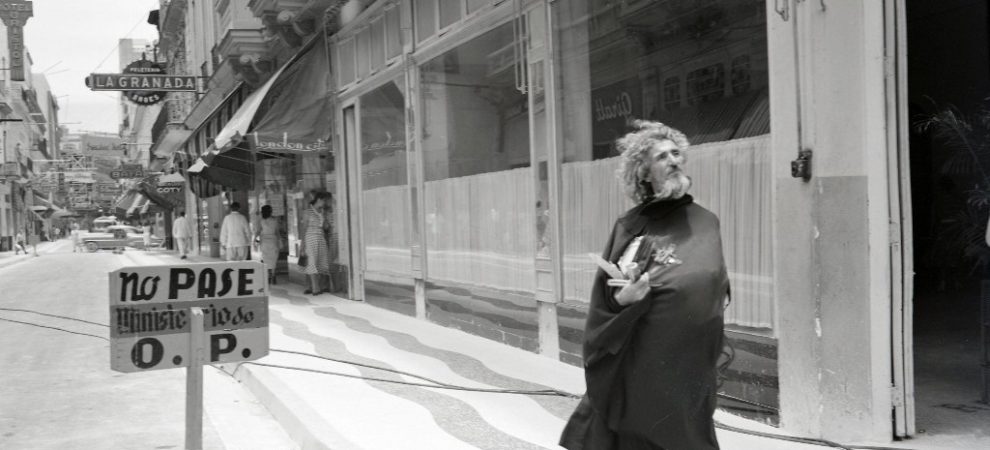Maybe the name José María López Lledín goes unnoticed among Habana inhabitants, but if we refer to him as El Caballero de París, few people will be unaware of the history of this man who lived in the streets of the Cuban capital until 1985.
López LLedín was born in Lugo, Spain in 1899 and came to Cuba when he was 12 years old onboard the German steamer “Chemnitz” to meet some relatives who were already living in our island. Ever since, he worked in multiple trades until he was unfairly imprisoned back in 1920 in the Castillo del Príncipe prison. The captivity drove him insane; he lost his mind.
José María began to show himself as El Caballero de Paris, and although neat and respectful, he wandered around Havana without taking care of the claims of his family that,so they say, wanted to take care of him, without succeeding.
El Caballero used to sleep in the corner of Infanta and San Lázaro Streets, and frequented 19th and 32nd busses, traveling through areas of Vedado, Miramar and Centro Habana.
In 1977 he was admitted to the Psychiatric Hospital of Havana to receive health care because he had deteriorated considerably and he remained there until his death, in 1985, at 86 years old.
Dr. Luis Calzadilla Fierro, his psychiatrist and biographer, states that El Caballero suffered from paraphrenia, sometimes considered as a form of schizophrenia and that he did not suffer from hallucinations.
His remains today rest in the San Francisco de Asis Convent and his legend lives in Havana. El Caballero de París is remembered in many ways: a bronze sculpture in the Historic Center of Old Havana; as the protagonist of songs by Gerardo Alfonso, Liuba María Hevia and Barbarito Diez; paintings, cartoons, photographs and even a living statue with long beard and hair in Obispo St. are in charge of keeping him in force because the noble spirit of this man of chivalrous looking, who was famous back in the day, remains in the streets of Havana:
“Confused among the passers-by, José María López Lledín retraces now and-forever-the streets of Old Havana. Thanks to the magic of the sculptor José Villa Soberón, his silhouette of medieval knight is outlined at the entrance of the San Francisco de Asís Convent so that from mouth to mouth – as in ancient legends – the mystery of his identity is unveiled. “
There is no doubt that El Caballero de París is and will always be the most famous wanderer in Havana.





























Comments
Add a comment